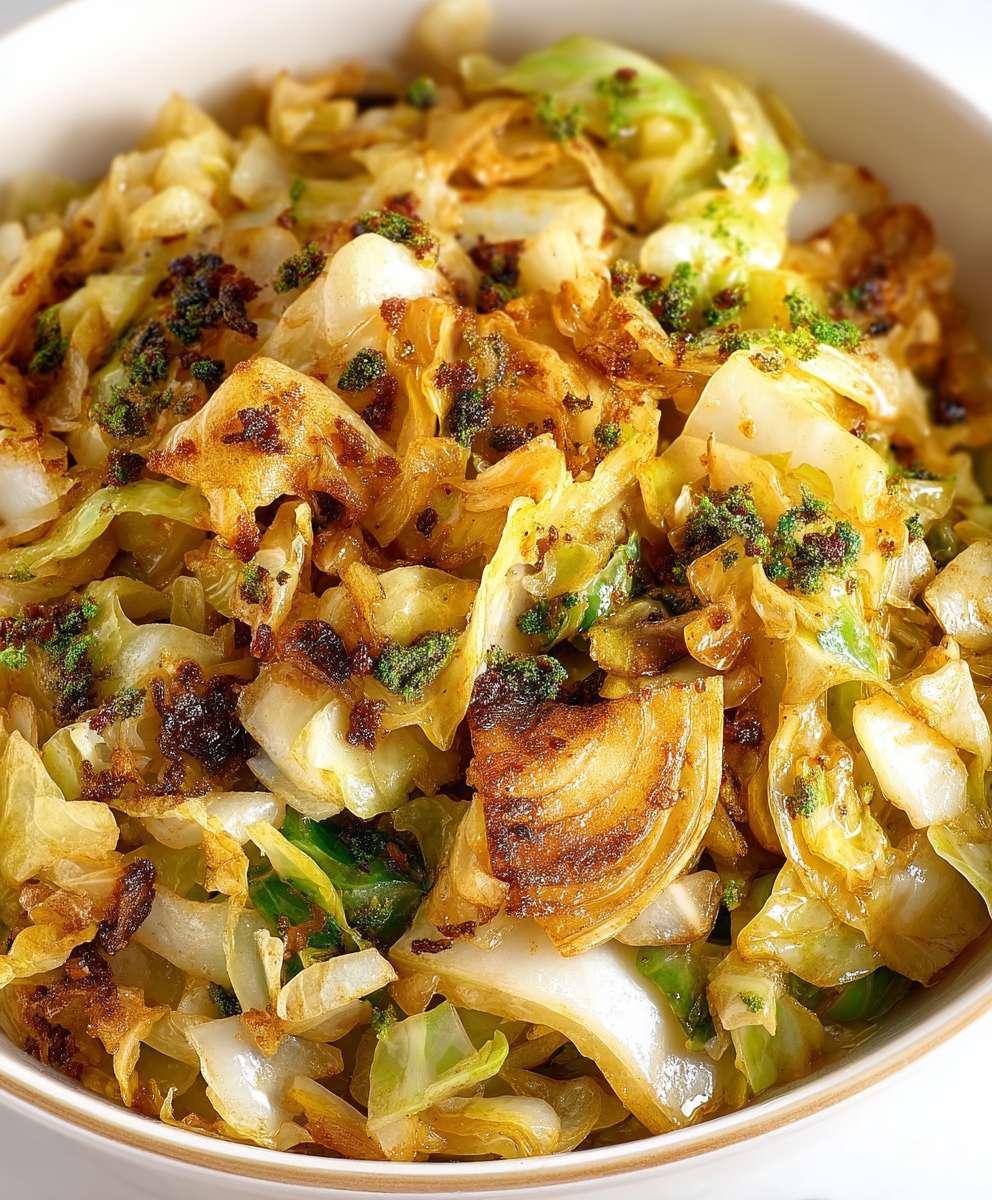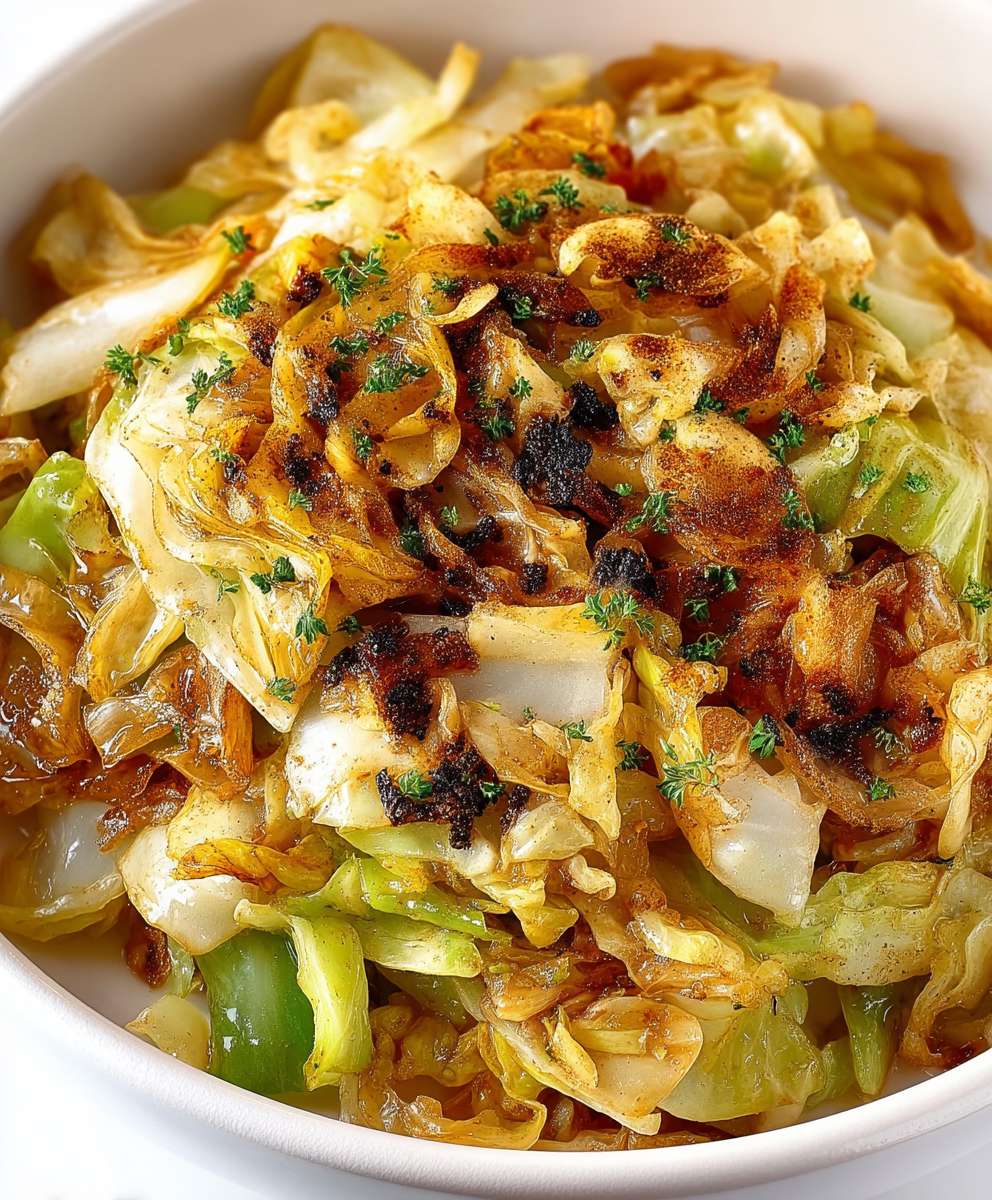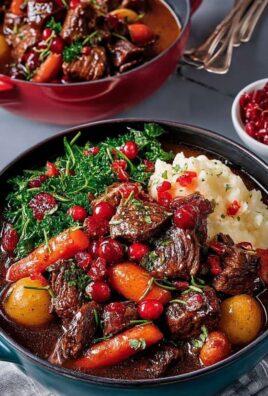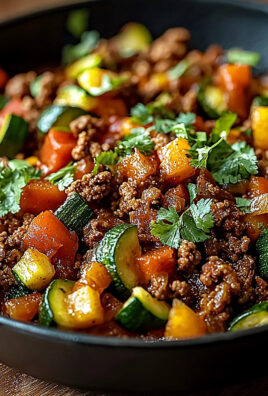Sauteed Cabbage: It’s not just a side dish; it’s a revelation! Forget everything you thought you knew about cabbage because this recipe will transform even the most ardent cabbage skeptic into a true believer. I’m talking tender, slightly sweet, and beautifully browned cabbage that’s ready in minutes.
Cabbage, a humble vegetable with a rich history, has been a staple in cuisines around the world for centuries. From the hearty stews of Eastern Europe to the vibrant slaws of America, cabbage has proven its versatility time and time again. In many cultures, it’s even considered a symbol of good luck and prosperity, often enjoyed during New Year celebrations. But let’s be honest, sometimes cabbage gets a bad rap for being bland or boring. That’s where this sauteed cabbage recipe comes in!
What makes this dish so irresistible? It’s all about the perfect balance of flavors and textures. The high heat of the saute pan brings out the natural sweetness of the cabbage, while a touch of butter and seasonings adds depth and complexity. People love this dish because it’s quick, easy, and incredibly satisfying. Plus, it’s a fantastic way to sneak in some extra vegetables without sacrificing flavor. Whether you’re looking for a simple weeknight side or a healthy addition to your lunch, this sauteed cabbage is sure to become a new favorite.
Ingredients:
- 1 large head of green cabbage, about 2-3 pounds
- 4 tablespoons olive oil, extra virgin
- 1 large yellow onion, thinly sliced
- 2 cloves garlic, minced
- 1/2 teaspoon caraway seeds (optional, but highly recommended!)
- 1/4 teaspoon red pepper flakes (optional, for a little heat)
- 1/4 cup apple cider vinegar
- 1/4 cup chicken broth (or vegetable broth for a vegetarian option)
- 1 tablespoon brown sugar (or maple syrup)
- 1 teaspoon Dijon mustard
- Salt and freshly ground black pepper to taste
- 2 tablespoons chopped fresh parsley, for garnish (optional)
Preparing the Cabbage and Other Ingredients
- Prepare the Cabbage: First things first, let’s get that cabbage ready. Remove any outer leaves that are wilted or damaged. Cut the cabbage in half through the core. Place each half cut-side down on your cutting board and slice it thinly. You want nice, even shreds. Don’t worry about being perfect; a little variation is fine. You should end up with about 8-10 cups of shredded cabbage.
- Slice the Onion: Peel the onion and cut it in half from root to stem. Place the cut side down on your cutting board and thinly slice it from root to stem. You want the slices to be relatively uniform so they cook evenly.
- Mince the Garlic: Peel the garlic cloves and mince them finely. You can use a garlic press if you prefer, but I find that mincing with a knife gives you the best flavor. Just be sure to chop it very finely to prevent any large, overpowering pieces.
- Measure Out the Remaining Ingredients: It’s always a good idea to have all your other ingredients measured out and ready to go before you start cooking. This will make the process much smoother and prevent you from scrambling around while the cabbage is cooking. Measure out the olive oil, caraway seeds (if using), red pepper flakes (if using), apple cider vinegar, chicken broth, brown sugar (or maple syrup), Dijon mustard, salt, and pepper.
Sautéing the Cabbage
- Heat the Olive Oil: Place a large, heavy-bottomed skillet or Dutch oven over medium heat. Add the olive oil and let it heat up for a minute or two until it shimmers. You want the oil to be hot enough to sizzle when you add the onions, but not so hot that it burns.
- Sauté the Onion: Add the sliced onion to the skillet and sauté it for about 5-7 minutes, or until it’s softened and translucent. Stir it occasionally to prevent it from sticking to the bottom of the pan. You want the onion to be nice and sweet, so don’t rush this step.
- Add the Garlic, Caraway Seeds, and Red Pepper Flakes (Optional): Add the minced garlic, caraway seeds (if using), and red pepper flakes (if using) to the skillet. Sauté for another minute, or until the garlic is fragrant. Be careful not to burn the garlic, as it can become bitter. The caraway seeds will add a lovely earthy flavor, and the red pepper flakes will give it a little kick.
- Add the Cabbage: Add the shredded cabbage to the skillet. It might seem like a lot of cabbage at first, but it will cook down considerably. Stir it well to combine it with the onion, garlic, and oil.
- Cook the Cabbage: Cook the cabbage, stirring occasionally, for about 10-15 minutes, or until it’s softened and slightly wilted. As the cabbage cooks, it will release some of its moisture. Continue to stir it to prevent it from sticking to the bottom of the pan.
- Add the Apple Cider Vinegar, Chicken Broth, Brown Sugar, and Dijon Mustard: Add the apple cider vinegar, chicken broth, brown sugar (or maple syrup), and Dijon mustard to the skillet. Stir well to combine. The apple cider vinegar will add a nice tanginess, the chicken broth will help to steam the cabbage, the brown sugar will add a touch of sweetness, and the Dijon mustard will add a subtle depth of flavor.
- Simmer the Cabbage: Reduce the heat to low, cover the skillet, and simmer the cabbage for another 15-20 minutes, or until it’s tender and the flavors have melded together. Stir it occasionally to prevent it from sticking to the bottom of the pan. The longer you simmer it, the more tender and flavorful it will become.
- Season to Taste: Season the cabbage with salt and freshly ground black pepper to taste. Be sure to taste it and adjust the seasoning as needed. You might need to add a little more salt or pepper depending on your preferences.
Serving the Sautéed Cabbage
- Garnish (Optional): If desired, garnish the sautéed cabbage with chopped fresh parsley. The parsley will add a pop of color and a fresh, herbaceous flavor.
- Serve: Serve the sautéed cabbage hot as a side dish. It’s delicious with roasted meats, sausages, or even as a topping for mashed potatoes. It also makes a great vegetarian main course when served with a side of crusty bread.
Tips and Variations:
- Add Bacon or Sausage: For a heartier dish, add cooked bacon or sausage to the skillet along with the onions.
- Use Different Vegetables: Feel free to add other vegetables to the skillet, such as carrots, bell peppers, or mushrooms.
- Add Spices: Experiment with different spices, such as cumin, coriander, or smoked paprika.
- Make it Sweet and Sour: Add a little more brown sugar and apple cider vinegar for a sweet and sour flavor.
- Use Different Vinegars: Try using different vinegars, such as balsamic vinegar or red wine vinegar.
- Add a Creamy Element: Stir in a dollop of sour cream or Greek yogurt at the end for a creamy texture.
- Make it Vegan: Use vegetable broth instead of chicken broth and maple syrup instead of brown sugar to make it vegan.
Storage Instructions:
Store leftover sautéed cabbage in an airtight container in the refrigerator for up to 3-4 days. Reheat it in a skillet over medium heat or in the microwave until heated through.
Nutritional Information (approximate, per serving):
Calories: 150-200
Fat: 8-12g
Carbohydrates: 15-20g
Protein: 2-4g
Enjoy your delicious and easy sautéed cabbage!

Conclusion:
So there you have it! This sautéed cabbage recipe is truly a game-changer, transforming humble cabbage into a flavorful and satisfying dish that will have you coming back for more. It’s quick, it’s easy, it’s budget-friendly, and most importantly, it’s absolutely delicious. What more could you ask for?
I know, I know, cabbage might not be the most exciting vegetable in the produce aisle, but trust me on this one. The simple act of sautéing it with the right seasonings unlocks a whole new level of flavor. The edges get beautifully caramelized, adding a touch of sweetness that perfectly complements the savory notes. It’s a textural delight too, with a satisfyingly tender-crisp bite.
But the best part? This recipe is incredibly versatile! You can serve it as a simple side dish alongside grilled chicken, pork chops, or even a hearty vegetarian burger. It’s also fantastic as a filling for tacos or burritos, adding a healthy and flavorful boost. Or, get creative and toss it with some cooked noodles and a drizzle of sesame oil for a quick and easy Asian-inspired meal.
Looking for variations? Oh, I’ve got you covered! For a spicier kick, add a pinch of red pepper flakes or a dash of your favorite hot sauce. If you’re a fan of bacon (and who isn’t?), crumble some crispy bacon over the top for an extra layer of smoky goodness. You could also experiment with different herbs and spices, such as caraway seeds, dill, or even a touch of curry powder. The possibilities are endless!
For a heartier meal, consider adding some sausage or kielbasa to the pan while the cabbage is sautéing. The savory flavors of the meat will complement the sweetness of the cabbage perfectly. You could also throw in some diced potatoes or carrots for a more substantial and filling dish.
And don’t forget about the toppings! A sprinkle of toasted sesame seeds, chopped fresh parsley, or a dollop of sour cream can add a touch of elegance and flavor to your sautéed cabbage.
I truly believe that this recipe is a must-try for anyone looking for a quick, easy, and delicious way to incorporate more vegetables into their diet. It’s a simple dish that delivers big on flavor, and it’s sure to become a staple in your kitchen.
So, what are you waiting for? Grab a head of cabbage, gather your ingredients, and get cooking! I promise you won’t be disappointed.
And most importantly, I want to hear about your experience! Did you try the recipe? Did you make any variations? What did you think? Share your thoughts and photos in the comments below. I can’t wait to see what you create! Happy cooking! Let me know if you have any questions, and I’ll do my best to answer them. I’m confident that you’ll love this simple yet satisfying way to enjoy sautéed cabbage. It’s a recipe that’s sure to become a family favorite!
Sauteed Cabbage: The Quick & Easy Recipe You'll Love
Simple and flavorful sautéed cabbage with onions, garlic, and a touch of sweetness and tang. A versatile side dish that's easy to make and perfect for any occasion.
Ingredients
- 1 large head of green cabbage, about 2-3 pounds
- 4 tablespoons olive oil, extra virgin
- 1 large yellow onion, thinly sliced
- 2 cloves garlic, minced
- 1/2 teaspoon caraway seeds (optional, but highly recommended!)
- 1/4 teaspoon red pepper flakes (optional, for a little heat)
- 1/4 cup apple cider vinegar
- 1/4 cup chicken broth (or vegetable broth for a vegetarian option)
- 1 tablespoon brown sugar (or maple syrup)
- 1 teaspoon Dijon mustard
- Salt and freshly ground black pepper to taste
- 2 tablespoons chopped fresh parsley, for garnish (optional)
Instructions
- Prepare the Cabbage: Remove any outer leaves that are wilted or damaged. Cut the cabbage in half through the core. Place each half cut-side down on your cutting board and slice it thinly. You want nice, even shreds. Don’t worry about being perfect; a little variation is fine. You should end up with about 8-10 cups of shredded cabbage.
- Slice the Onion: Peel the onion and cut it in half from root to stem. Place the cut side down on your cutting board and thinly slice it from root to stem. You want the slices to be relatively uniform so they cook evenly.
- Mince the Garlic: Peel the garlic cloves and mince them finely. You can use a garlic press if you prefer, but I find that mincing with a knife gives you the best flavor. Just be sure to chop it very finely to prevent any large, overpowering pieces.
- Measure Out the Remaining Ingredients: It’s always a good idea to have all your other ingredients measured out and ready to go before you start cooking. This will make the process much smoother and prevent you from scrambling around while the cabbage is cooking. Measure out the olive oil, caraway seeds (if using), red pepper flakes (if using), apple cider vinegar, chicken broth, brown sugar (or maple syrup), Dijon mustard, salt, and pepper.
- Heat the Olive Oil: Place a large, heavy-bottomed skillet or Dutch oven over medium heat. Add the olive oil and let it heat up for a minute or two until it shimmers. You want the oil to be hot enough to sizzle when you add the onions, but not so hot that it burns.
- Sauté the Onion: Add the sliced onion to the skillet and sauté it for about 5-7 minutes, or until it’s softened and translucent. Stir it occasionally to prevent it from sticking to the bottom of the pan. You want the onion to be nice and sweet, so don’t rush this step.
- Add the Garlic, Caraway Seeds, and Red Pepper Flakes (Optional): Add the minced garlic, caraway seeds (if using), and red pepper flakes (if using) to the skillet. Sauté for another minute, or until the garlic is fragrant. Be careful not to burn the garlic, as it can become bitter. The caraway seeds will add a lovely earthy flavor, and the red pepper flakes will give it a little kick.
- Add the Cabbage: Add the shredded cabbage to the skillet. It might seem like a lot of cabbage at first, but it will cook down considerably. Stir it well to combine it with the onion, garlic, and oil.
- Cook the Cabbage: Cook the cabbage, stirring occasionally, for about 10-15 minutes, or until it’s softened and slightly wilted. As the cabbage cooks, it will release some of its moisture. Continue to stir it to prevent it from sticking to the bottom of the pan.
- Add the Apple Cider Vinegar, Chicken Broth, Brown Sugar, and Dijon Mustard: Add the apple cider vinegar, chicken broth, brown sugar (or maple syrup), and Dijon mustard to the skillet. Stir well to combine. The apple cider vinegar will add a nice tanginess, the chicken broth will help to steam the cabbage, the brown sugar will add a touch of sweetness, and the Dijon mustard will add a subtle depth of flavor.
- Simmer the Cabbage: Reduce the heat to low, cover the skillet, and simmer the cabbage for another 15-20 minutes, or until it’s tender and the flavors have melded together. Stir it occasionally to prevent it from sticking to the bottom of the pan. The longer you simmer it, the more tender and flavorful it will become.
- Season to Taste: Season the cabbage with salt and freshly ground black pepper to taste. Be sure to taste it and adjust the seasoning as needed. You might need to add a little more salt or pepper depending on your preferences.
- Garnish (Optional): If desired, garnish the sautéed cabbage with chopped fresh parsley. The parsley will add a pop of color and a fresh, herbaceous flavor.
- Serve: Serve the sautéed cabbage hot as a side dish. It’s delicious with roasted meats, sausages, or even as a topping for mashed potatoes. It also makes a great vegetarian main course when served with a side of crusty bread.
Notes
- Add Bacon or Sausage: For a heartier dish, add cooked bacon or sausage to the skillet along with the onions.
- Use Different Vegetables: Feel free to add other vegetables to the skillet, such as carrots, bell peppers, or mushrooms.
- Add Spices: Experiment with different spices, such as cumin, coriander, or smoked paprika.
- Make it Sweet and Sour: Add a little more brown sugar and apple cider vinegar for a sweet and sour flavor.
- Use Different Vinegars: Try using different vinegars, such as balsamic vinegar or red wine vinegar.
- Add a Creamy Element: Stir in a dollop of sour cream or Greek yogurt at the end for a creamy texture.
- Make it Vegan: Use vegetable broth instead of chicken broth and maple syrup instead of brown sugar to make it vegan.
- Storage Instructions: Store leftover sautéed cabbage in an airtight container in the refrigerator for up to 3-4 days. Reheat it in a skillet over medium heat or in the microwave until heated through.





Leave a Comment